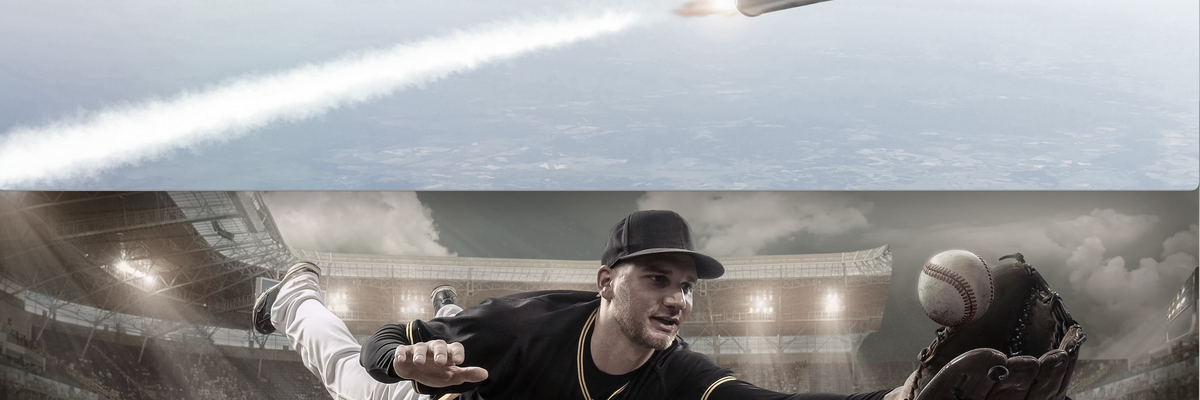If you believe in nuclear deterrence, then China’s recent tests of new missiles and construction of several hundred new missile silos does not worry you. China currently has about 100 nuclear-armed missiles that could hit the United States. The United States, in turn, has about 2,000 that can hit China.
Deterrence theory holds that neither side will strike the other for fear of a devastating counter strike. It does not really matter if China has 100 nuclear missiles or 500. Both are more than enough to deter a U.S. strike and visa-versa.
However, if what you seek is nuclear primacy, an absolute nuclear superiority that would allow you to strike China first, destroy most of its missiles and intercept any remaining missiles with a global system of missile defense weapons, then you are freaked out by China’s developing capabilities. China could blunt U.S. nuclear primacy.
To understand how, we can look to baseball.
When an outfielder sees a player hit a long fly ball, they can quickly calculate the speed and direction of the ball and plot an intercept point. The baseball will follow a ballistic trajectory from the bat, arcing high in the air and coming down in the player’s glove — if they have the skill to arrive at the right point at the right time.
If the ball hits the roof of a domed stadium (which happens occasionally) and it changes direction. The outfielder must plot a new intercept point. That is what the new weapon China tested this summer does.
The Financial Times reported last week that China tested a new maneuvering, hypersonic weapon that circled the globe. The hypersonic part doesn’t matter. All long-range missiles are hypersonic, that is, they reenter the atmosphere as speeds greater than five times the speed of sound. It is the maneuvering part that counts.
All existing missile defense weapons depend on satellites to detect an adversary’s missile launch after it breaks cloud cover, plot its trajectory, and launch an anti-missile to intercept it — not where the missile is, but where it will be.
Tests of the U.S. Ground Based Midcourse Defense System show that under perfect conditions, it can hit a target missile about half of the time. That is not an effective defense, but the Chinese and Russians assume that it might someday work. So, they are developing weapons that can penetrate any future missile defense.
In their recent test, instead of launching the missile in a high, arcing, and predictable trajectory, the Chinese resurrected an old Soviet plan to put warheads briefly in orbit. The Soviets called it a Fractional Orbital Bombardment System, or FOBS. Since the warhead’s orbit could be long or short, it is impossible to predict its impact point. In addition, the Chinese warhead is not a simple cone-shape but has a glider design, like a miniature Space Shuttle, that allows it to change direction and speed on reentry. The combination makes it nearly impossible to intercept.
It is as if a batter hit a ball that circled the baseball stadium’s domed roof and then landed wherever it damn well pleased.
In addition, this orbiting system gives the missile the ability to travel further and faster than a traditional ballistic missile. The Chinese and the Russians could launch these weapons over the South Pole instead of the usual route over the North Pole. They would evade U.S. missile defense radars, which are all currently north facing.
This is like a batter beating the shift. If a batter has a high probability of hitting the ball in a certain direction, teams will often place three or even all four of their infielders to the right or left of second base. But if a hitter can hit a ball to where the defenders aren’t, they can defeat the defense. That is precisely what the Chinese and Russians hope to do with their new systems.
All this, of course, is completely predictable once the United States decided it wanted to build a “shield” to defend against enemy missiles. For example, I predicted it when President George W. Bush abrogated the Anti-Ballistic Missile Treaty. “No Chinese leader can allow the Chinese nuclear force to be neutralized by the United States,” I said at a press conference in late 2001. “China is already engaged in strategic modernization. No matter what the relationship with the United States is over the next 10 years, Beijing will have to consider the U.S. defensive system. This means that it will likely increase its pace of modernization, place multiple warheads on its missiles, and probably deploy countermeasures with those missiles.”
Missile defense might look defensive to Americans, but it looks offensive to the Chinese and Russians. “The shield followed by the sword” is how some Chinese describe it. The massive $2 trillion U.S. plan to build new nuclear-armed missiles, bombers and submarines confirm their fears. This is not about deterrence, it is about U.S. dominance.
“Go back and look at the testimony of Bush administration officials when they withdrew from the ABM Treaty,” writes Dr. Jeffrey Lewis in a recent article. “They all criticized mutual deterrence as an anachronism of the Cold War.”
Rather than the Chinese test marking a “new Sputnik moment” as some have hyped, Lewis argues this could be a new 9/11 moment when Washington’s overreaction turned a terrible attack into a 20-year catastrophe. “The United States panicked and made the world more chaotic and threatening,” he warns. “And, now, it’s gearing up to do so again.”
Lewis is right. If official Washington decides to follow through with this predictable pattern, the U.S.-China rivalry is likely to enter a new, much more dangerous phase.
















